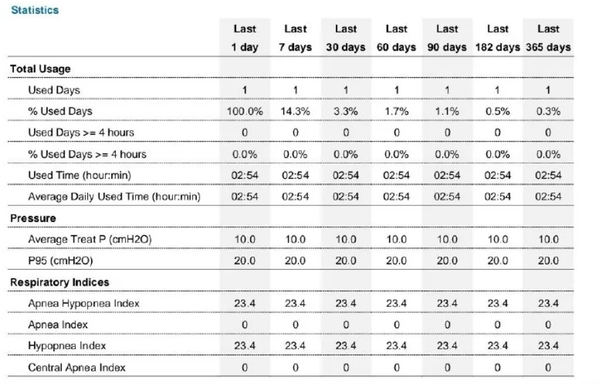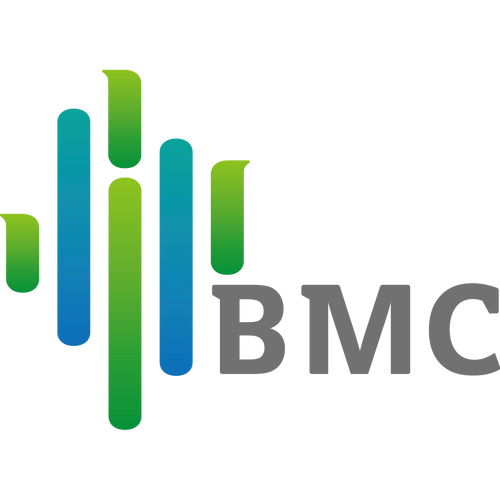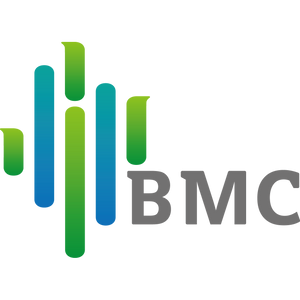What is AHI?
Snoring is a common problem that can have significant consequences on your health. If you suffer from snoring, you may be at risk for sleep apnea, which can lead to serious health problems. A ventilator can help to treat your snoring and improve your sleep quality. The data generated by your ventilator during treatment can be beneficial in revealing your sleep health and the effectiveness of your treatment.
The AHI stands for Apnea-Hypopnea Index, and it's a way to measure how often you experience apneas or hypopneas while you're asleep. As well as how well your CPAP therapy is working.
For example, to view the AHI data for BMC CPAP, open PAPlink and click on the report icon in the navigation bar.
Apnea severity is not solely determined by AHI (other factors include clinical presentation, hypoxemia, sleep fragmentation, and arrhythmias), but it is a helpful way to classify the condition.
AHI is a key metric for diagnosing sleep apnea. It is a measure of the number of apneas and hypopneas per hour of sleep.
- Normal: ≤5
- Mild: 5-14
- Moderate: 15-29
- Severe: ≥30
Calculation formula
AHI = total number of events ÷ total number of hours (sleep time)
=(Apnea number + Hypopnea number) ÷ total minutes x 60
For example, a person has 50 apnea events and 90 hypopnea events during 450 minutes (6.5 hour ) of actual sleep time.
The AHI =(50+90)÷450x60 = 22 AHI (Moderate)
At present, it is generally believed that an AHI of less than 5 is at the level of a normal person. After wearing the CPAP machine, it forms a closed breathing circuit. So long as the sensitivity of the machine is high enough and the algorithm is good enough, the AHI can be calculated after a night of operation.
High Apnea-Hypopnea Index (AHI)
The risks associated with a high Apnea-Hypopnea Index (AHI) are numerous and can have serious consequences. AHI is determined by the number of apneas and hypopneas per hour of sleep. Common external manifestations of a high AHI include snoring and sleepiness during the day. However, the main danger of a high AHI is Hypoxia, which is caused by oxygen deprivation. Oxygen deprivation can lead to reduced sleep quality, drowsiness, and fatigue during the day. It can also contribute to high blood pressure, diabetes, and other health problems.
The CPAP machine is a common treatment for sleep apnea. After using the machine for a period of time, most people see a significant drop in their AHI (apnea-hypopnea index) value. This means that the treatment is effective. If your AHI does not drop significantly or starts to increase, then you should pay attention and talk to your doctor.
Why is my AHI not going down with CPAP?
Inappropriate pressure and air leakage from the cpap mask will affect the therapeutic effect of the cpap machine, resulting in abnormal AHI. At this time, it is recommended that the user adjust the treatment pressure according to the advice of professional service personnel, and wear the cpap mask correctly.
If you confirm that all settings are correct, but the AHI is still out of the normal range, it is necessary to further confirm whether it is central sleep apnea. If so, the treatment strategy needs to be changed.
What affects AHI?
Because everyone's disease and sleep habits are different. After analyzing the use data of a large number of patients, we have summarized the following reasons that affect the AHI :
- Degree of nasal patency
If you are a patient with rhinitis or have other nasal function problems, airflow through the nasal cavity is obstructed. And some patients are used to mouth breathing, and once the mouth is opened during the treatment, the treatment effect will be greatly reduced or even no effect.
- Mask leak
If the air is escaping from your mask, it means you're not receiving the full amount of air pressure needed to keep your airway open.
a. sleeping position
The best way to sleep is on your back. This position allows your head, neck, and spine to rest in a neutral position. Side-sleeping may cause the consequence of pressing the tube, which could lead to air leaks and reduced effectiveness of treatment.
b. Trouble getting used to wearing the CPAP mask
Wearing a mask can be uncomfortable at first, which might cause some people to take it off during the night without realizing it. If you're not comfortable with the type of mask you're using, try to use a different one.
c. Mask aging
With regular use, both the mask and headgear will stretch and wear out. This escape of air leads to less effective pressure levels at night. If you don't want your CPAP mask to leak, you need to change it and the headgear regularly.
- Alcohol Before Bed
There are many potential consequences of drinking alcohol before bed, including a jump in your AHI. Alcohol can relax the muscles in your upper airway, making them more likely to collapse. If you want to improve your sleep quality, consider cutting back on alcohol consumption.
- Parameter Settings
It is important to track the new cpap machine continuously for a few days after using it, in order to make necessary adjustments. The pressure levels should not be too high or low, as this can impact AHI data. It may take some time to get the perfect settings, but it is worth it in the long run.
- Central or Complex Sleep Apnea
Although CPAP machines are designed to treat obstructive apneas, they may not always be effective in treating central sleep apneas. Central sleep apneas are caused by a dysfunction in the central nervous system, not a physical obstruction. Most newer CPAP machines will report if you’re experiencing central apneas or you can’t identify what is causing your rising AHI, contact your doctor as soon as possible.



